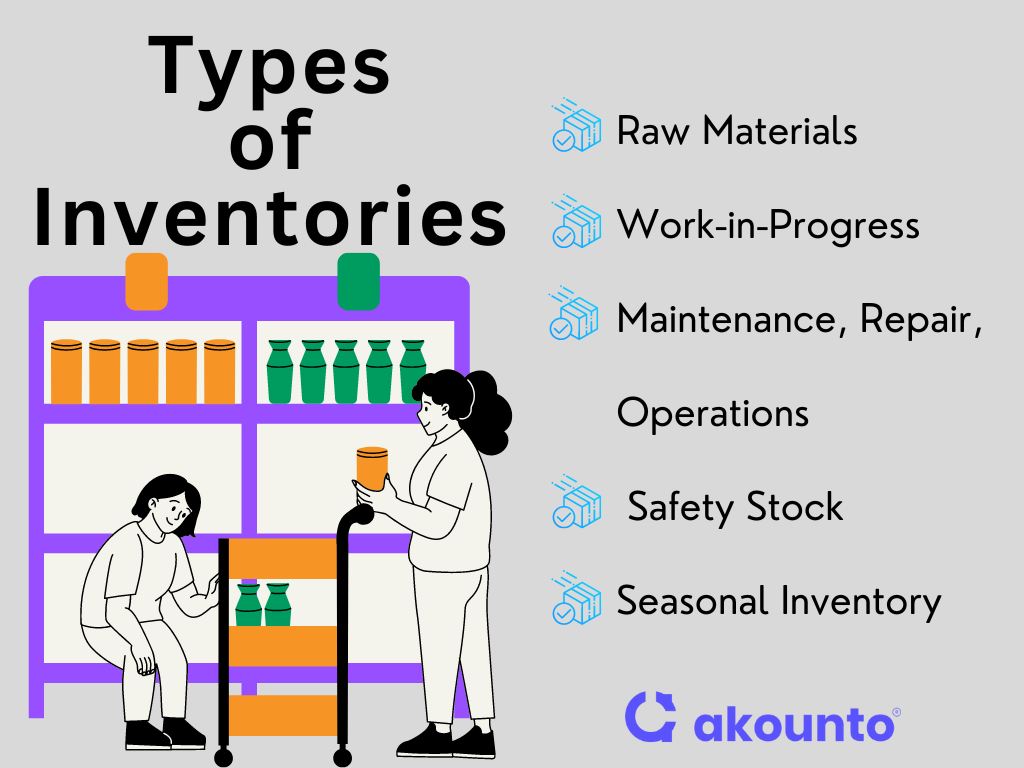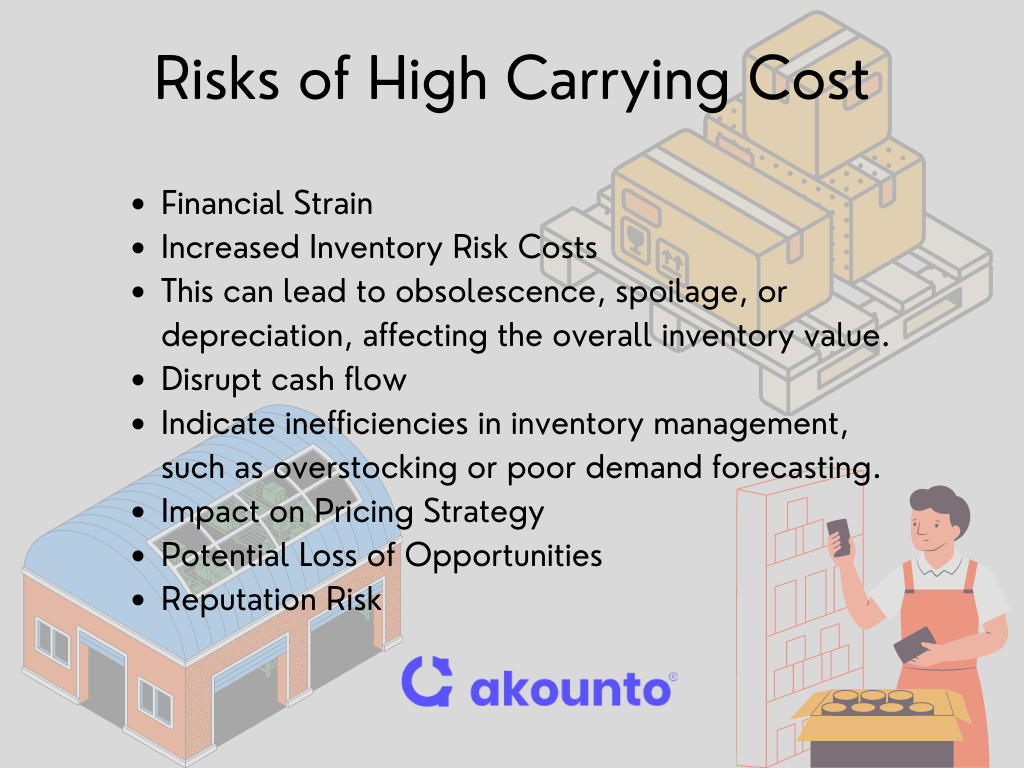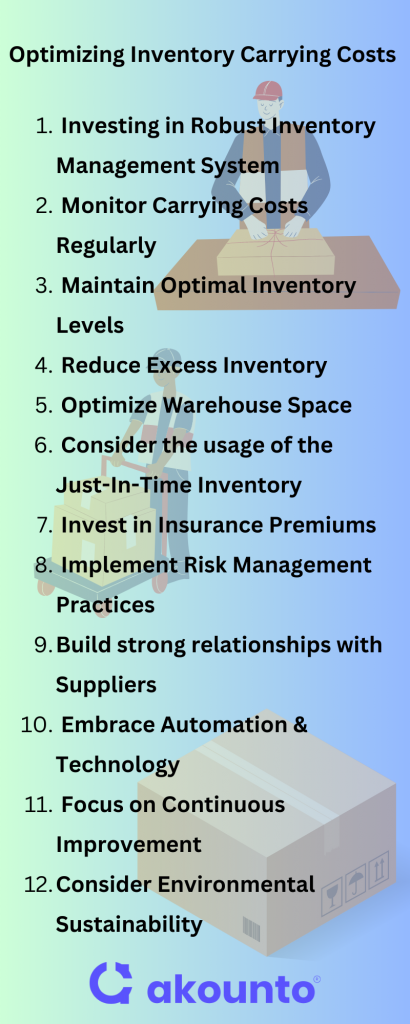Understanding Inventory Carrying Costs
Inventory carrying costs represent the total expenses a company incurs to hold and store inventory over a specific period.
[ez-toc]
Inventory carrying cost impacts capital costs and reflects on the efficiency of supply chain management. Monitoring carrying costs is essential to eliminate inventory inefficiencies and guide future business decisions.
Inventory carrying costs are intertwined with various factors, including purchasing warehouse space, warehouse layout optimization, and the management of high inventory carrying costs. These costs are not just related to the physical holding of inventory but also encompass related costs such as opportunity costs, administrative costs, and inventory risk costs.
Implementing an inventory management system can help in reducing carrying costs by providing insights into total inventory value and facilitating better control over the supply chain, enhancing inventory management, thereby aiding in making data-driven decisions that can lead to cost optimization and support the company’s future growth and stability.
By understanding the intricate relationship between these elements, businesses can take proactive measures to reduce carrying costs and avoid too much stock, ultimately leading to more streamlined operations and better alignment with customer demand.
Types of Inventories

Understanding the different types of inventories is essential for effective inventory management and control of carrying costs. Common types are:
- Raw Materials: These are the unprocessed materials used in manufacturing products. Managing raw materials inventory ensures that production can continue without delays.
- Work-in-Progress (WIP): This inventory consists of items that are in the process of being manufactured but are not yet finished. Monitoring WIP helps in reducing carrying costs by optimizing production flow.
- Finished Goods: These are the completed products ready for sale. Proper management of finished goods inventory aligns with customer demand and prevents overstocking.
- MRO (Maintenance, Repair, and Operations) Inventory: This includes items used in the maintenance and repair of production equipment. Efficient MRO inventory management can reduce downtime and associated costs.
- Safety Stock: This buffer inventory is kept to meet unexpected demand surges or supply chain disruptions. Calculating the right level of safety stock minimizes the risk of stockouts without holding too much inventory.
- Seasonal Inventory: Items that are stocked in anticipation of seasonal demand fall under this category. Proper forecasting and planning are vital to managing seasonal inventory effectively.
Significance
Inventory carrying costs encompass various elements, including storage space costs, insurance premiums, and holding costs associated with storing inventory.
One of the primary concerns is excess inventory, which leads to increased storage costs and ties up valuable capital. This situation can negatively affect cash flow, making it challenging for businesses to invest in other essential areas.
The inventory carrying costs vary depending on factors such as the type of inventory, location, and market conditions.
Conducting manual cycle counts and closely monitoring the total inventory value helps identify areas where costs can be optimized. For example, reducing the amount of stored inventory can lower insurance premiums and free up space, leading to cost savings. More inventory than necessary can lead to obsolescence and wastage, further escalating costs.
On the flip side, having insufficient inventories can lead to stockouts or even halt the manufacturing process. A lack of essential raw materials or finished goods can disrupt the supply chain, leading to missed sales opportunities, dissatisfied customers, and very high opportunity costs.
Components of Inventory Carrying Costs
Capital Costs
The capital cost associated with inventory carrying includes the investment made in purchasing inventory. This cost represents the opportunity cost of the funds tied up in inventory, which could have been used elsewhere in the business. Managing the total inventory value can help in optimizing capital costs.
Storage Costs
Storage costs include expenses related to warehouse space, inventory holding sum, and other warehousing and fulfillment logistics. These costs differ based on the location, size, and type of storage facilities used. Implementing efficient inventory management software can help in controlling these costs by optimizing inventory levels.
Service Costs
Inventory service cost encompasses expenses such as insurance, security, and utilities. These costs are essential for maintaining the existing inventory in good condition and protecting it from potential risks such as theft or damage.
Holding Costs
Holding costs, also known as inventory holding cost, include expenses related to the physical handling and maintenance of inventory. This category covers costs such as heating, cooling, and general upkeep of the storage environment. Proper management of holding costs ensures that unsold inventory is stored appropriately without incurring unnecessary expenses.
Risk Costs
Inventory carrying also involves risk costs, such as potential obsolescence, spoilage, or depreciation of goods. These risks can affect the value of the inventory and lead to financial losses if not managed properly.
Administrative Costs
Administrative costs include expenses related to the management and oversight of inventory, such as personnel salaries, software subscriptions for inventory management software, and other operational costs. Efficient administration helps in maintaining accurate inventory records and supports overall cost control.
Calculating Inventory Carrying Cost
Calculating inventory carrying costs is a critical aspect of inventory management that directly impacts a company’s bottom line.
Inventory Carrying Cost Formula
The inventory carrying cost formula is a comprehensive equation that considers various components to determine the total cost of holding inventory. The formula can be expressed as:
Inventory Carrying Cost=(Holding Costs + Storage Costs + Capital Costs + Inventory Service Costs + Insurance Premiums +Risk Costs )/ Total Inventory Value
- Holding Costs: These include the costs associated with storing inventory, such as heating, cooling, and general maintenance of the warehouse space.
- Storage Costs: This encompasses the expenses related to the physical storage space, including rent or mortgage payments.
- Capital Costs: This represents the opportunity cost of the funds invested in inventory, including interest or potential returns from alternative investments.
- Inventory Service Costs: These include costs such as insurance, security, and other services required to maintain the inventory.
- Insurance Premiums: This covers the cost of insuring the inventory against potential risks like theft or damage.
- Risk Costs: These are the costs associated with potential obsolescence, spoilage, or depreciation of goods.
Examples
Example 1
A manufacturing company wants to calculate inventory carrying cost to optimize its warehouse operations. The company has the following details:
- Total Inventory Value: $500,000
- Holding Costs: $50,000 (including warehouse rent, utilities, etc.)
- Inventory Service Cost: $10,000 (including insurance and security)
- Capital Cost: $20,000 (interest on funds tied up in inventory)
Calculate inventory carrying costs.
Solution
Using inventory carrying costs formula:
Using the Inventory Carrying Cost Formula:
Carrying Cost=(Holding Costs + Inventory Service Cost + Capital Cost)/ Total Inventory Value
Carrying Cost = (($50,000 + $10,000 + $20,000)/ $500,000)* 100 = 16%
Example 2
A retail business wants to calculate inventory carrying costs to understand the financial impact of holding excess inventory during a slow sales season. The details are as follows:
- Total Inventory: 10,000 units
- Inventory Value per Unit: $20
- Holding Costs per Unit: $2 (including storage costs)
- Inventory Service Cost per Unit: $1 (including insurance)
- Capital Cost per Unit: $0.50 (opportunity cost)
Solution
Using the Inventory Carrying Cost Formula:
Total Inventory Value = Total Inventory Inventory Value per Unit} = 10,000 $20 = $200,000
Total Carrying Costs per Unit = Holding Costs + Inventory Service Cost +Capital Cost= $2 + $1 + $0.50 = $3.50
Total Carrying Cost = Total Carrying Costs per Unit Total Inventory = $3.50 * 10,000 = $35,000
Carrying Cost as a Percentage of Total Inventory Value= (Total Carrying Cost/ Total Inventory Value) 100% = ($35,000/$200,000 )* 10 = 17.5\%
Inventory Turnover Ratio
The Inventory Turnover Ratio measures number of times inventory sold and replaced over a specific period. A higher ratio indicates efficient inventory management, while a lower ratio may signal overstocking or obsolescence.
Example: If a company has $5,000 in sales and an average inventory value of $1,000, the inventory turnover ratio would be:
Using Inventory Turnover Formula: Net Sales or COGS/ Average Inventory = 5000/1000 = 5
This means the inventory was turned over five times during the period.
Risks of High Carrying Cost

High inventory-carrying costs can pose significant risks to a business, impacting both financial stability and operational efficiency. Here’s an overview of the potential risks:
- Financial Strain: Elevated inventory carrying cost can lead to financial strain, tying up capital that could be used elsewhere in the business. The capital cost associated with holding excess inventory can limit a company’s flexibility and growth potential.
- Increased Inventory Risk Costs: High carrying costs often correlate with increased inventory risk costs. Holding large amounts of inventory can lead to obsolescence, spoilage, or depreciation, affecting the overall inventory value.
- Cash Flow Challenges: Maintaining high levels of total inventory can disrupt cash flow, making it challenging to meet financial obligations such as loan maintenance fees or other operational expenses.
- Operational Inefficiencies: Excessive carrying costs may indicate inefficiencies in inventory management, such as overstocking or poor demand forecasting. This can lead to increased inventory holding cost and inventory service cost, affecting overall profitability.
- Impact on Pricing Strategy: High inventory carrying cost may force businesses to adjust pricing strategies to move excess inventory, potentially affecting brand perception and customer loyalty.
- Potential Loss of Opportunities: Funds tied up in inventory could be used for other investment opportunities or business expansion. The opportunity cost of high carrying costs can limit a company’s ability to innovate or pursue new markets.
- Reputation Risk: Failure to manage inventory carrying cost-effectively can lead to stockouts or overstocking, affecting customer satisfaction and potentially harming the company’s reputation.
11 Tips for Optimizing Inventory Carrying Costs

Optimizing inventory carrying cost is essential for maintaining financial stability and operational efficiency. Here are some tips to reduce inventory carrying costs:
1. Implement an Effective Inventory Management System
Investing in a robust inventory management solution can streamline the tracking and management of inventory levels. This technology helps in reducing manual errors, improving accuracy and providing real-time insights into inventory status. It can guide future business decisions and eliminate inventory inefficiencies, ultimately reducing inventory costs.
2. Regularly Monitor Carrying Costs
Regular monitoring of inventory carrying costs, including storage costs, holding costs, and capital costs, allows businesses to identify areas for improvement. By conducting manual cycle counts and analyzing existing inventory, companies can make informed decisions to optimize inventory costs.
3. Maintain Optimal Inventory Levels
Holding too much inventory lead to high carrying costs, while too little can cause stockouts. Balancing inventory levels to meet customer demand without overstocking is vital. Utilizing inventory turnover ratio metrics and aligning with sales forecasts can help in maintaining optimal levels.
4. Reduce Excess Inventory
Excess inventory leads to increased storage space costs and risk costs. Implementing strategies to reduce overstock, such as discounting or bundling products, can help in moving unsold inventory and minimizing associated costs.
5. Optimize Warehouse Space
Efficient utilization of warehouse space can significantly reduce inventory holding costs. Designing an effective warehouse layout, purchasing warehouse space wisely, and optimizing storage practices can lead to cost savings.
6. Consider Just-In-Time (JIT) Inventory
The Just-In-Time inventory method involves ordering inventory only when needed, reducing holding and storage costs. This approach requires careful planning and coordination with suppliers but can lead to significant cost reductions.
7. Invest in Insurance and Risk Management
Protecting inventory from potential risks such as theft or damage is essential. Investing in appropriate insurance premiums and implementing risk management practices can safeguard the total inventory value and minimize unexpected costs.
8. Negotiate with Suppliers
Building strong relationships with suppliers and negotiating favorable terms can lead to cost savings. Whether it’s negotiating bulk discounts or flexible payment terms, collaboration with suppliers can positively impact inventory carrying cost.
9. Embrace Automation and Technology
Automation and technological advancements, such as RFID tracking and AI-driven forecasting, can enhance inventory management. These tools reduce manual labor, increase accuracy, and provide valuable insights for decision-making. Deploy inventory management software to keep track of inventory levels.
10. Focus on Continuous Improvement
Adopting a continuous improvement mindset and regularly reviewing inventory service costs, holding costs, and related costs can lead to ongoing optimization. Regular training, process reviews, and performance benchmarking can foster a culture of continuous improvement.
11. Consider Environmental Sustainability
Implementing environmentally sustainable practices in inventory management can also contribute to cost savings. Reducing waste, recycling, and considering the environmental impact of inventory decisions align with modern consumer values and can enhance brand reputation.
Conclusion
Managing inventory carrying costs is vital for a business’s financial health. Understanding the components, calculating costs, optimizing, and monitoring the inventory turnover ratio can lead to significant savings. Implementing these strategies ensures efficient inventory management, aligning with the company’s financial goals and operational efficiency.
To know more about such concepts, visit the Akounto website.




